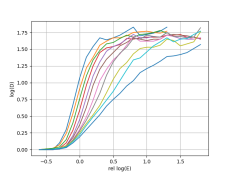If you mean the range between white and the darkest black, then I'd say that every grade should be able to produce it.
Quite, but not quite. At the lowest grades, it may not always be possible with all papers to get the same dmax as on higher grades. I quite painfully ran into this when building a led exposure head where I found I had to mix in just a tiny bit of blue with the green of grade 0 in order to hit dmax (most testing was done with Adox MCC110).
But how do I know that that filter grade is getting the full range of what the paper can give me? Is a grade 2 really a grade two?
Those are two different questions.
1: Does the filter give the full tonal scale the paper has to offer? Actually, not a very pressing matter, but if you want to make sure, expose a test strip without any filter and observe the tonal range the paper can make. The compare with your filter of choice, and, if you so desire, start working on finding non-linearities of the response curve etc. BUt I'd say, keep an eye on what you want to achieve. It's surprisingly easy to get lost in very interesting technical matters that turn out to have relatively little practical implications for 99.9% of the printing you're likely to do.
2: Is filter #2 really grade 2? For this you'll have to compare a set of test strips you make using a known-accurate step wedge and compare the outcome against the Iso_R grade plots of the paper. Note that not all paper manufacturers list detailed information on ISO-R grade and curves in their datasheets. Note also that there is no agree-upon definition of what constitutes 'grade 2'. Ilford's 'grade 2' may be slightly different from Adox's etc. They will be fairly close, but not necessarily an exact fit. Again, ask yourself: how important is this to you? How important is it really to be able to say "my negatives are optimized for grade 2" if you realize that (1) probably only you will print your own negatives, under your own and self-determined conditions & requirements, and (2) your paper's grade 2 may not be the exact same grade 2 of someone else's paper (from their preferred brand, with their light source, in their preferred developer etc.)
Imagine you are actually optimizing your negatives for grade 1.5 or 2.5 without knowing it. What's the impact of this? At some point you may change what paper you prefer to print on, replace your old and trusty contrast filter/enlarger head, switch developers or change whatever parameter you can think of. You then find out that your negatives all of a sudden require just a little more punch (let's say half a grade) or they are just a bit too contrasty (by, let's say, half a grade) for your new printing process. So what do you do? I'd say, adjust filtration by half a grade and live happily ever after. At least, that's what I'd do and try not to lose any sleep over it.








